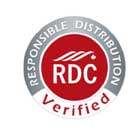Industry Information, Shipping to Canada
How the Canada/US Exchange Rate Effects Cross Border Transportation
Ever Wonder how the Canada/US Exchange Rate Effects Cross Border Transportation?
The exchange rate between Canada and the United States has a huge impact on the balance of trade and truck traffic between Canada and the US. This article explains why.
What it was like a decade ago
Why did it used to cost $500 -$700 10 years ago for a truckload from Chicago to Toronto and now it costs $1800-$2000. Why did it go up so much? As a matter of fact, why did all the Northbound shipment rates go up?
These questions are all directly related to the Canada US/Exchange rate and the balance of trade between Canada and the United States. Over the last decade there has been a slow and steady appreciation of the Canadian Dollar relative to the US Dollar. While it’s had its share of roller-coaster rides up and down the net result is a Canadian Dollar at or above par with the US Dollar.
A decade ago, the Canadian Dollar was worth less than 70 cents US. At the time, Canada produced a wide range of finished goods and Ontario was a real economic powerhouse exporting much of what was manufactured to the United States. Because the Canadian Dollar was “cheap” relative to the US Dollar, Canadian made goods were very competitive in the US market.
There was a net SOUTHBOUND flow of goods on trucks
At the time there weren’t enough trucks to carry goods to the US. You had to book a week or so out in order to book space. However, coming back from the US, if you had freight you got great low backhaul rates because the carriers were just interested in turning their truck around to get home and satisfy their Canadian exporting customers.
EXAMPLE: A carrier typically needs around $2.00 per mile to be in the black. Back in the day, when outbound rates to Chicago were $1500-$1600, they could take a load back from Chicago for $500 and still be OK. Chicago is 500 miles away and a round trip is 1000 miles. So $1500 out and $500 home got the carrier what they needed.
What it’s like today
Today, it’s a much different story. With the Canadian Dollar hovering around parity with the US Dollar, Canadian manufactured goods no longer have a cost advantage in the US. The manufacturing base of Canada slowly but surely lost their biggest customer: The United States. Manufacturing plants have been closing and there are very little manufacturers left in Canada. Today’s balance of trade is much different. If you look at the statistics in dollars, it doesn’t tell the whole story. Canada still exports a lot of resources to the United States, particularly, energy resources. These don’t travel on trucks.
Today, carriers have a high demand for Northbound freight to Canada and relatively little demand for southbound freight to the United States (in comparison to how it used to be). Now, a carrier’s customers are demanding more trucks in the US coming back to Canada. However, there’s just not enough freight to get them there. So now the economics have changed.
There is a net NORTHBOUND flow of goods on trucks
EXAMPLE: Chicago to Toronto is still a 500 mile journey. The outbound rates to Chicago have fallen to as low as $500. So, to make the equation work, the carrier needs in excess of $1500 to come home.
Other effects of currency
Because carriers do much more business with US customers shipping to Canada, almost half of their receivables can be in US Dollars. This is a great risk for a carrier. Imagine a small to medium carrier might have $500,000 in USD receivables. Now let’s say the exchange rate between the time the order was booked and the time the customer paid changed by 3 cents. That’s not an outrageous swing. 3% of $500,000 is $15000. That could make or break a carrier’s year! In addition, all the outstanding prices in USD have to be adjusted to compensate. Many carriers have implemented a currency surcharge to deal with this issue. The charge increases as the Canadian Dollar rises and decreases as the Canadian Dollar falls.
About Author
Comments are closed











